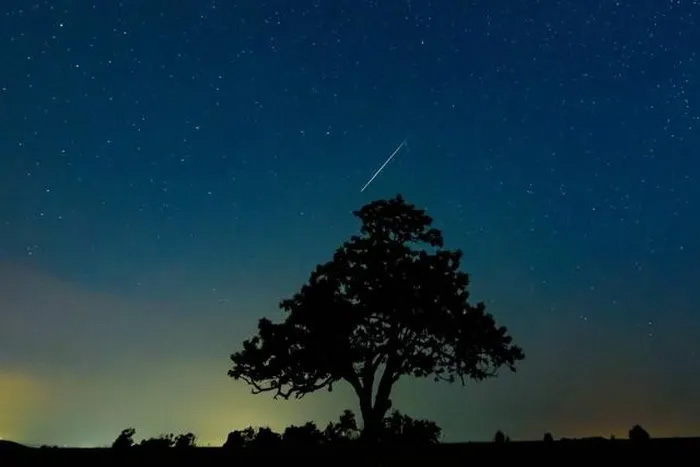Meteor showers and interesting astronomical phenomena taking place in November you should not miss
Hanoi Astronomical Society (HAS) said that November will have many interesting astronomical phenomena worth admiring such as the new moon, super moon, 2 meteor showers as well as the phenomenon of Uranus coming to the opposition position.
Here are some interesting astronomical phenomena that will take place in November:
November 1 – New Moon
The Moon will be on the same side of the Earth as the Sun and will not be visible in the night sky. This phase occurs at 7:49 p.m. ET. This is the best time of the month to observe faint objects such as galaxies and star clusters because there is no moonlight to interfere.
November 4-5 – Taurids Meteor Shower

November will have two consecutive meteor showers lighting up the night sky.
The Taurids are a minor meteor shower producing about 5-10 meteors per hour. It is unique in that it is made up of two separate showers. The first shower is produced by dust grains left behind by the asteroid 2004 TG10. The second shower is produced by debris left behind by the comet 2P Encke. The shower runs annually from September 7 to December 10. It peaks this year on the night of November 4. The first quarter moon will obscure all but the brightest meteors this year. If you are patient, you may still catch a few good ones.
The best viewing will be just after midnight from a dark location away from city lights. Meteors will radiate from the constellation Taurus, but can appear anywhere in the sky.
November 15 – Full Moon, Super Moon
The Moon will be on the opposite side of the Earth from the Sun and its face will be fully illuminated. This phase occurs at 4:30 a.m. ET. This full moon was known to Native American tribes as the Beaver Moon because this was the time of year to set beaver traps before the swamps and rivers froze. It has also been known as the Frosty Moon and the Dark Moon. This is also one of the last three Supermoons of 2024. The Moon will be near its closest point of contact with the Earth and may appear slightly larger and brighter than usual.
11/17: Uranus at Opposition
This is the best time to observe the planet. Although it is theoretically visible to the naked eye, it will only be a faint speck even under the most ideal viewing conditions. So, like Neptune, it will only be a notable event for observers with telescopes.
17-18/11: Leonids Meteor Shower
This shower occurs in the region of the constellation Leo. In 2024, the Leonids will remain an average shower, producing about 30 meteors per hour at its peak. The moon will make it harder to see. You should still be able to see a few meteors in clear skies. They can appear in all directions of the sky, but will be most concentrated in the region of the constellation Leo.
The show began on Sunday morning, November 18, when Earth passed into a dust cloud created by Comet Tempel-Tuttle in 1766. Thousands of meteors per hour rained down on North America and Hawaii. Then, on the morning of November 19 (local time in Asia), it happened again: Earth passed into a second cloud of comet debris from Tempel-Tuttle. Thousands more Leonids meteors then rained down on East Asia and Australia.
- Amazing 6 astronomical phenomena explode in the sky in November
- See the amazing astronomical phenomena of 2013
- Amazing astronomical phenomena should not be missed in March 2017
- Virtual astronomical phenomena in April
- 6 interesting astronomical phenomena are about to appear in Vietnam
- Guide to photographing meteor shower phenomenon
- 12 amazing astronomical phenomena cannot be missed in 2016
- Meteor shower is about to appear
- Amazing astronomical phenomena in May
- 18 outstanding astronomical phenomena in 2014
- There are the largest Geminids meteor showers in 2017
- The first meteor shower of 2018 peaked at dawn 4/1
 Van Allen's belt and evidence that the Apollo 11 mission to the Moon was myth
Van Allen's belt and evidence that the Apollo 11 mission to the Moon was myth The levels of civilization in the universe (Kardashev scale)
The levels of civilization in the universe (Kardashev scale) Today Mars, the sun and the Earth are aligned
Today Mars, the sun and the Earth are aligned The Amazon owner announced a secret plan to build a space base for thousands of people
The Amazon owner announced a secret plan to build a space base for thousands of people